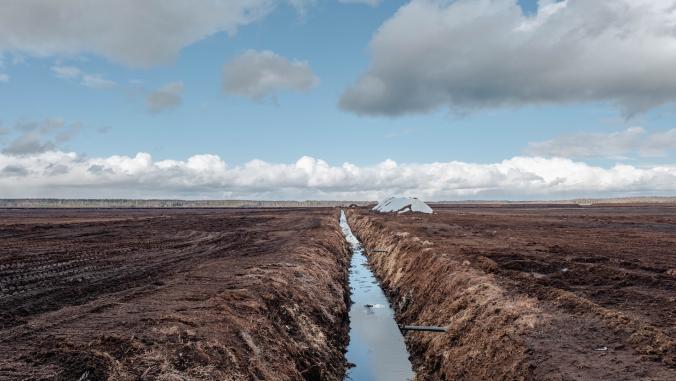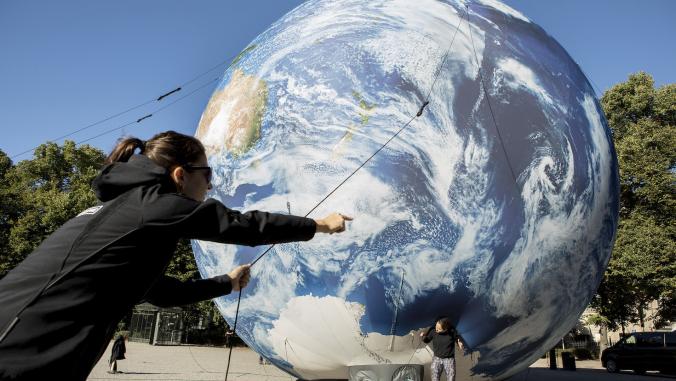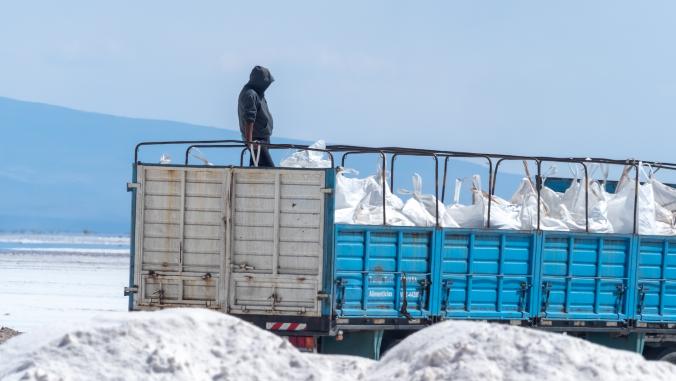Stockholm World Water Week 2018: Our take and what's next
The value of water strategy innovation, not just the risks, is becoming crystal clear.

A sharper focus on the value of embracing innovative water stewardship strategies was an undercurrent at Stockholm World Water Week 2018.
It has been a little over a month since Stockholm World Water Week (SWWW), which means it’s about the right time to reflect on what was accomplished at the gathering, what opportunities were missed and what we might expect in 2019.
Our takeaways from this year along with our recap of our seminar on the role of industry in ecosystem and watershed management are provided below.
1. Private sector organizations are critical partners in the delivery of the SDGs.
Companies can implement business strategies that help deliver on the Sustainable Development Goals (SDGs) by offering innovative products and services to engage consumers that solve shared water challenges such as access to safe drinking water sanitation and hygiene (SDG 6.1 and 6.2) and water quality (SDG 6.3).
In general, the ability to drive business growth while simultaneously contributing to solving environmental and social will be the hallmark of leading companies.
2. We must build and strengthen pre-competitive multi-stakeholder platforms.
Platforms that support multi-stakeholder collaboration and pre-competitive engagement, and peer-learning within and across sectors play a critical role in motivating engagement and supporting efforts to scale impact.
Further enhancing these platforms, as part of the Fourth Industrial Revolution (a phrase coined by the World Economic Forum), will be an array of technologies (blockchain, internet of things, artificial intelligence, etc.) that represent an opportunity for businesses to drive and deliver innovative solutions.
3. Companies are increasingly seeking to quantify both risk and value.
If we are looking for the next generation of private sector actors to adopt and invest in water stewardship, we must step up efforts quantify risk and begin to quantify the value of a water-oriented business strategy and/or investments.
Quantifying value helps drives innovation in technology, business models, partnerships and financing/funding of solutions. This process also can help to inform public policy. Companies that effectively have addressed water, ecosystems and human development needs through collective action and business ecosystem strategies are attractive to a wider investor and consumer base (brand value and brands with a purpose).Companies that address water, ecosystems and human development through collective action are attractive to a wider investor and consumer base.
As investors begin to ask about value creation, there is the clear need to ensure tools are available to help to generate a clear case for monetizing costs and benefits. Thankfully, there are an increasing number of efforts to quantify the value of water responding to this need — including new approaches coming out from WWF & Water Foundry in 2019 via the Water Risk Filter, a comprehensive set of water maps and country data sets.
4. We see an emergent narrative rooted in opportunity and value creation.
Building off the trend towards quantifying value, numerous sessions at SWWW 2018 reflected the storyline that the future of corporate water strategy lies in the opportunities presented by water, not solely in its risks. Embodying this trend, WWF released its Water Stewardship Revisited report, which outlined the need to shift from a risk narrative to one centered on value creation.
As the report notes: "To improve effectiveness, we must now journey down the road at greater speed and scale than ever before with the early adopters helping to mobilize the majority. To make that happen, we believe that forging a new narrative — from risk to value creation — will be key."
It is both of our beliefs that creating business value from a water-oriented business strategy (building on stewardship with innovation in technology, financing, business models, partnerships and brand equity creation as suggested in the book "Water Stewardship and Business Value") will be an important characteristic of successful companies moving forward.
5. There will be a growth in water-related innovation.
Throughout SWWW there was an increased focus on innovation to address water challenges and a path to achieving SDG 6, which calls for clean water and sanitation for all.
This emerging focus was not just on innovation in technology but also in partnerships and financing programs. Expect to see more dialogue and programs on innovation at SWWW 2019.
One highlight of SWWW 2018 was the Urban Water Scarcity Innovation Prize from Imagine H2O, Bluewater and 11th Hour Racing. Per Imagine H20, the "Urban Drinking Water Challenge 2018 is a global innovation competition that commits up to $1 million to deploy and invest in scalable water solutions for tomorrow's megacities." This year, the winners were Drinkwell, Microlyze and Smartterra. These companies are focused on water treatment, real time water quality monitoring at the tap and smart water infrastructure management tools, respectively.
This trend towards harnessing new tech and innovation approaches for water seems to be growing as water-related prize competitions and social entrepreneurs proliferate at Stockholm and beyond.
6. Finance and green infrastructure finally have arrived at the table.
For many years, water issues have remained out of focus for many financial institutions, and accordingly, the array of financial instruments and fintech providers has been lacking. The buzz at SWWW 2018 suggested this is shifting, and that as finance comes to the table, potential investors are considering both grey and green infrastructure.
Indeed, the rising popularity of green bonds, combined with the growing water challenges, crumbling grey infrastructure, quantified analytics of the performance of green infrastructure and various other 4IR innovations is resulting in a whole host of new thinking on how green infrastructure can be enabled and financed to deliver on shared water challenges.There seems to be a growing acceptance of green infrastructure as a viable approach for infrastructure service provision.
There seems to be a growing acceptance of green infrastructure as a viable approach for infrastructure service provision — from nutrient management to flood control, planners, engineers and financiers are starting to see ecosystems as providing viable returns on investment.
Hopefully, when SWWW 2019 rolls around next year, we will have moved beyond many pilots and towards scaling efforts (WWF’s work on Bankable Water Solutions).
For the two of us, this year was different from previous SWWWs — involving more stakeholders from outside the water sector and showcasing a greater emphasis on value from water stewardship/water strategy and innovation. We are encouraged and energized by our encounters there.






